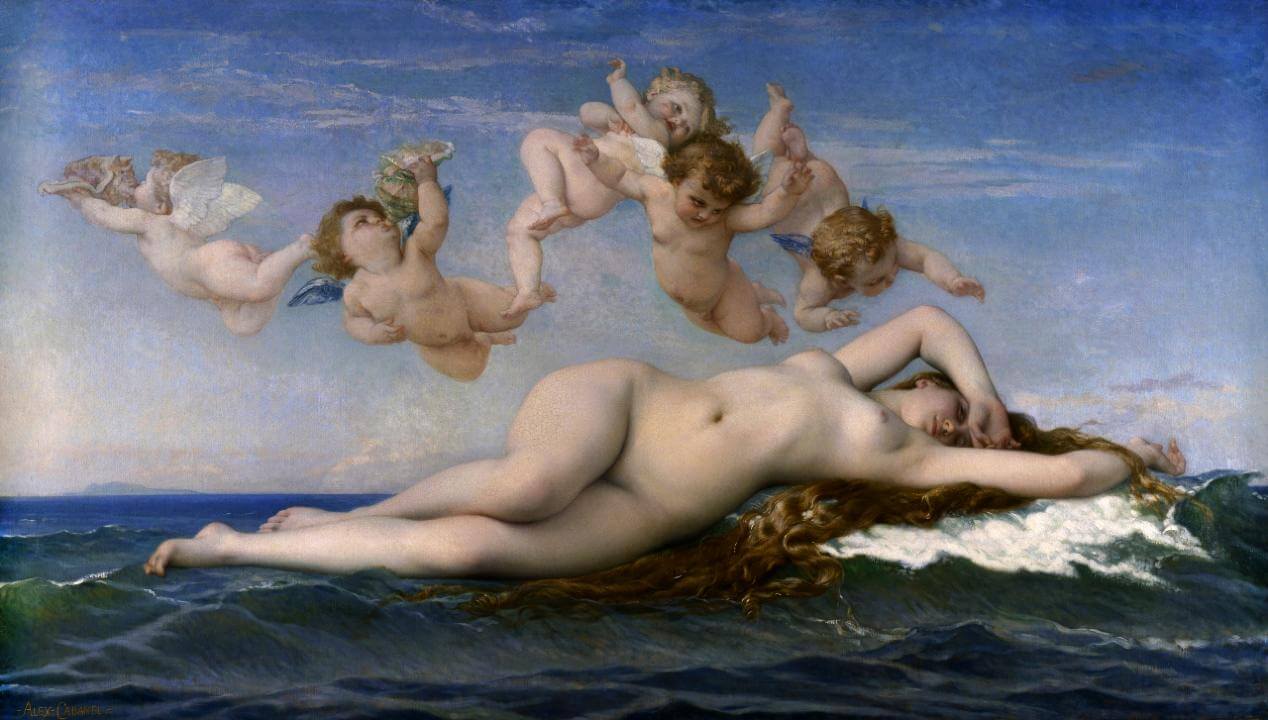Ancient Goddess of Love, the Aphrodite Star, and the planet Venus
Santa Ana, Inanna, Ishtar, Venus and Aphrodite, in fact, is the same divine personality, and they all share the same original myth.
We start from Anahita — the Aryan (Ancient Iranian) Goddess of love and war known to humanity for 6000+ years. She is found later in the religious beliefs of the Mesopotamian nations and far beyond them till nowadays.
Her glorious time-travel lasts over thousands of years is not yet over, and she is in every culture and everywhere over the geography. The divine influence of the Goddess of love conquers every continent of Earth and takes its place in almost every religion.
Conquer? Yes, she is the Goddess of war at the same time!
The nations have changed, the languages have disappeared, Babylon got ruined, while Anahita, the love personified stays with us all the time for thousands of years and on. Anahita is the contradictory Goddess of Love and War, eternally young and beautiful, we know her better as Aphrodite or Santa Anna. She bears even more names in the cultures of the world.

Anahita (Ishtar) the Queen of the Night
ANAHITA was simultaneously the ancient Goddess of Love and the Goddess of War in the Aryan (Ancient Iranian) period, translates into a very long time ago, when Chinese hardly had a scripting and Egyptians were only building their Pyramids.
THEN, as Anahita migrated into the Mesopotamian cults, already closer to us, yet still very far ago, people worshiped her as “Ishtar” and/or “Inanna” and used a few of her other names of the same root through the different languages of the region. In Ancient Europe she got well-recognized as “Aphrodite” and later “Venus” in the Greek-Roman beliefs, and then she became “Santa Anna” when she landed into Christianity, keeping the traditional relation to the Morning star just like every version of Anahita before her.
Always curvy, sexy and perfect, her fame is supported continuously worldwide throughout the unstoppable cultural works, motion pictures, video-games, cartoons, paintings, monuments, printable 3D-art, practically everywhere, and everybody knows her; and/or her counterparts.

Olivia Wilde as Princess Inanna (Ishtar) in “Year One” (2009) motion picture, and Jack Black as Chosen One
Whatever the name, in fact she is the same divine personality, the representation of Love, or better say she is Love per se, the ancients reckoned. She stands tall for purity, love and creation. Her planet is Venus, every time, for thousands of years. We’ve collected and compiled a number of myths and historical records about the mysterious Anahita, Ishtar or Aphrodite, the multicultural and officially the most beautiful woman on Earth and Heaven.
Anahita, the Goddess of love, war and contradiction
From what we know about Ana, or Anahita, for the first time in the history record she appears in the Aryan (Ancient Iranian) religion, subtract 6000 years from today. Found in texts and depicted in the so-called cylindrical seals.
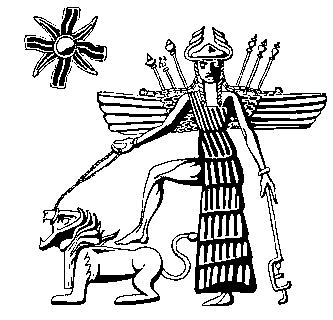
Anahita (Ishtar), Akkadian seal, 2300 BC
Anahita as a word in their language translates into “Purity”, and she is also a deity of water along with love and war, where Love => Purity => Water is simple logic to agree. I dare to say the divine “water management” in nature, in its ample scope, perfectly aligns with love and creation as her principal activities, and logically extends to fertility, sexuality, physical and political power.
Anahita is…
the Goddess of Love! Extended to: Passion, Life, Purity, Creation, etc.
the Goddess of War! Extended to: Death, Fear, Destruction, etc.
the Goddess of Contradiction! Extended to: Justice, Political Power, etc.
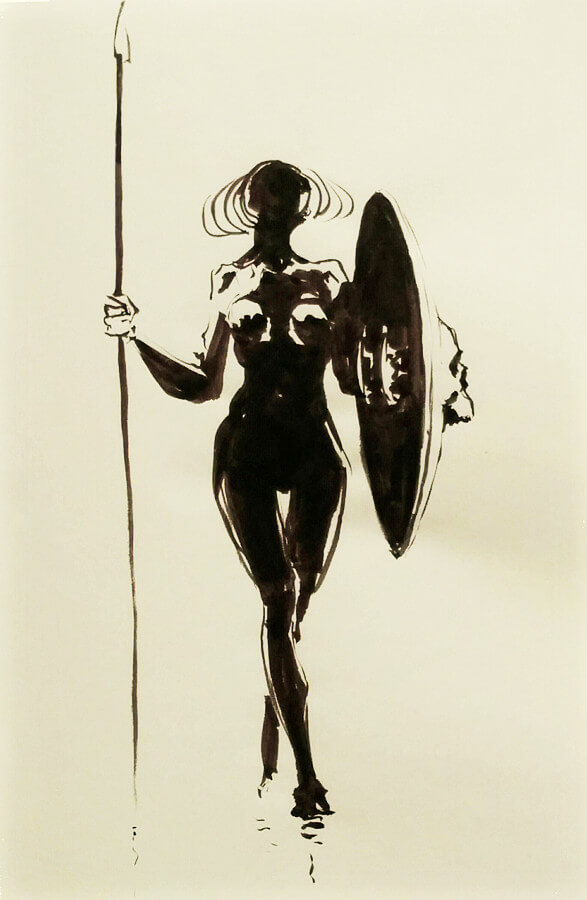
Ishtar (Anahita) Love and War @hypnothalamus
Igniting the brilliance of Love among the Aryan (Ancient Iranian) culture, the magnificent rays of her divine star spread The Power of LOVE further on into all directions: every single Mesopotamian nation got her sacred fire, so did the Norse people, Mediterranean islands, Persia, Greece, Carthage and Rome, Israel, India and the Middle East, practically everyone.
Anahita, The Goddess of Love, continuously develops herself sending Love into every next pantheon and every branch of religion, all the way up to the modern beliefs:
✴ Anahita — Aryan (Ancient Iranian), also Zoroastrian,
✴ Inanna — Sumerian, Persian,
✴ Durga — Hindu and Nepalese, aka Bhavani
✴ Ishtar or Istar — Babylonian, Persian, Akkadian, Assyrian,
✴ Astarte — Canaanite, Phoenician, aka Anat
✴ Tanit — Malta and Carthage,
✴ Freya — in the Norse (Viking) mythology
✴ Aphrodite — Greek version,
✴ Venus — Roman version,
✴ Santa Anna — in Christianity, the grandma of Jesus.
I’m sure this is not even a full list, yet comprehensive enough. The longer you dig into the myth, the more you find — endlessly — because Anahita, Ishtar, Aphrodite or Ana (let’s use her modern name for awhile) is the MOST CONTINUOUSLY WORSHIPED DEITY IN THE HUMANKIND HISTORY!
Anahita as Love personified is the most continuously worshiped deity of all time
«
The cosmic beauty, the universal power and all horrors of destruction altogether, she is like water creating life and being able to crush a rock, sink a ship, make an ocean where there is desert, or make a desert where there is life. Ancients reckoned Love was the Universe itself, the driving power for everything. War and Love partner together in the spirit of Anahita, the Ancient GODDESS OF LOVE AND WAR.
»
✴ We cannot leave unnoticed the recognition of her name as “Ana” in yet another modern use: “ANASHA” is the Persian-origin street name for marijuana in Russia and its imperial whereabouts — the straight forward translation of “Anasha” is “Queen” or “Queen of Love”, as the word contains “ana” (goddess of love) and “sha” (the feminine form of “shakh” = “king”).
Anasha as an euphemism for marijuana which is in use widely even now, spreading out from the former territory of the Golden Horde (an early medieval state established by Genghis Khan) which is Kazakhstan in the present time. Anasha is well-recognized in Russia as “marijuana” and in other nearby states.
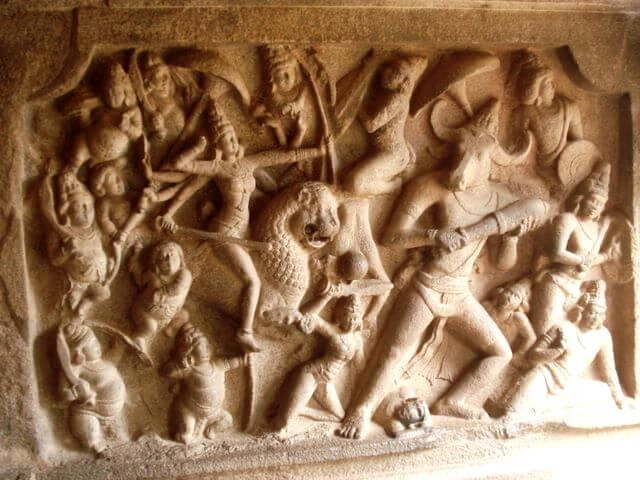
Durga riding on a lion at Varaha Cave (source:wiki)
✴ Anahita rides on the LION, either in a chariot with one or two lions harnessed or simply on the lion’s back. Sometimes holding a lion. This Lion later became the Lion of Babylon when Ancient Iranian Anahita changed to Ancient Babylonian (Mesopotamian) Ishtar.
✴ When depicted, Anahita, Inanna or Ishtar is often accompanied by the eight-point star which is called “Star of Venus” or “Star of Ishtar”. This star is a symbol of Venus as a planet and as a goddess of love, standing for freedom, love and spiritual purity as her principal purpose; and war as a necessity.
Star of Venus = Star of Ishtar
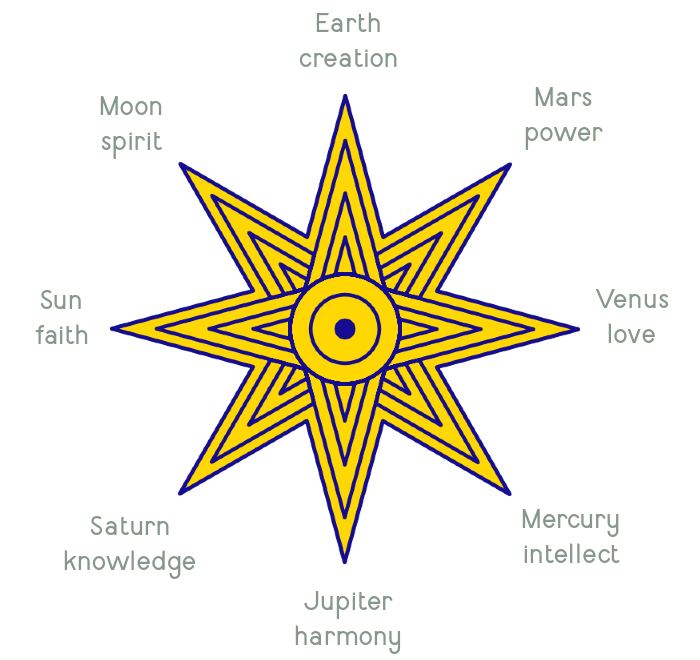
✴ You’ve of course recognized the phonetic similarity between “Ishtar”, the Persian version of the goddess of love and war, and “Star” as a modern word. Adding up, there is a certain similarity in sound between the Canaanite version of the love goddess “Astarte” and the modern word “Astra” of the Latin-origin, and it also means “star”, as in “astronaut”.
«
There is an empirical guess, which is growing on me, that Ana, Anahita, and Inanna ARE THE NAMES, and they basically represent “purity” as a straight forward translation. The other group of words, such as Ishtar or Astarte ARE THE NICKNAMES representing a star as an object in the sky with rays and glow. These are not “versions” of the name, but names and nicknames. Michael Jordan is also “Air”, and a good example for the said.
»
✴ ISHTAR (Inanna) is the goddess of love and war in Ancient Mesopotamia, Persia and in the Middle East as a whole region and beyond. Nations changed, countries died, Ishtar stayed. Worshiped in Babylon, worshiped by Persians, Akkadians, Assyrians, Canaanites, and all others. ISHTAR in the depictions appears as the eternally young, stunningly beautiful maiden, she is in charge of love affairs, wisdom, political power and war, and because she is pure, she also stands for justice. The planet of ISHTAR is VENUS.
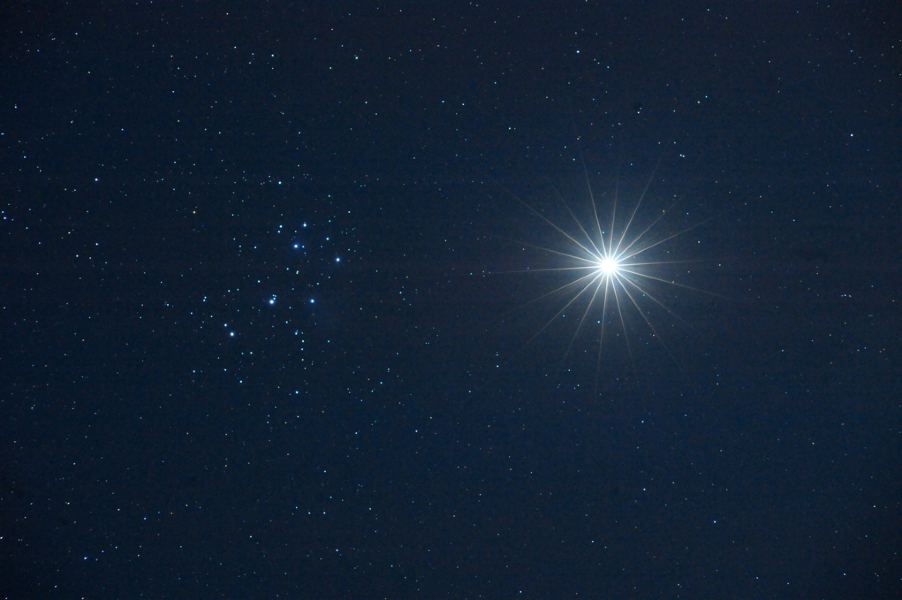
NASA’s shot of VENUS the planet
✴ VENUS as the planet appears magnificent, as a miracle for the naked eye, unbelievably, and this is NOT some artist’s impression on the photography, but Venus in fact shines this bright, and its halo is this shape indeed shooting the long, sharp and purely bright rays.
✴ VENUS as the name of the planet is “Anahid” in the Persian language because Venus is the planet of Anahita, both words Anahita and Anahid refer to Purity.
✴ Romans believed they were the descendants of VENUS (Aphrodite) the goddess of love as through her son Aeneas, the participant of the Trojan War, who fled to Italy after the fall of Troy and his direct descendants were Romulus and Remus, founders of Rome as a city. Here is the genealogy.
✴ VENUS (Aphrodite) as the goddess provoked the Trojan War using cunningly the Apple of Discord, and then she was wishing to fight the war as a warrior by herself but changed her opinion at the last minute. She was a Warrior and a smart, cunning politician too, yet not exclusively a passionate lover of the incredible sexual ferociousness; overestimated at times.
✴ Aphrodite (VENUS) was the patron of seafarers, free traders, corsairs and pirates. Yet another link to Anahita who governed all water, including rivers and oceans. I can guess the planet Venus could be used for some navigation at the sea and, no doubt, serve as a symbol of hope.
✴ Aphrodite (VENUS) and her most permanent love affair with Ares (MARS) the God of War has resulted that she is the mother to Phobos (Fear), Deimos (Terror), Harmonia and Eros. She had more children, we mentioned a few for sake to demonstrate the dual-nature of the ancient gods.
✴ VENUS as the planet, Star of Ishtar as a symbol, likeliness in the names and contents of the myths, along with their devotion to love, war and purity — compose one Deity of these beautiful goddesses.
We take a closer look at the ear-ring of Princess Inanna from the “Year One” movie now. Honestly, there are more than eight rays in Olivia Wilde’s earring, maybe merely a coincidence, but I love to think this is the Star of Venus that she’s wearing. What other star can wear Ishtar or Inanna? And I love this movie, after all.

Olivia Wilde (Princess Inanna) wears the Star of Venus earring
The Morning Star
The planet Venus appears in the sky for a short period of time, never higher than 40-something degrees over the horizon. It shines extremely bright reflecting a lot of sun light from its dense atmosphere; as bright as the full Moon even though Venus is much farther than the Moon.
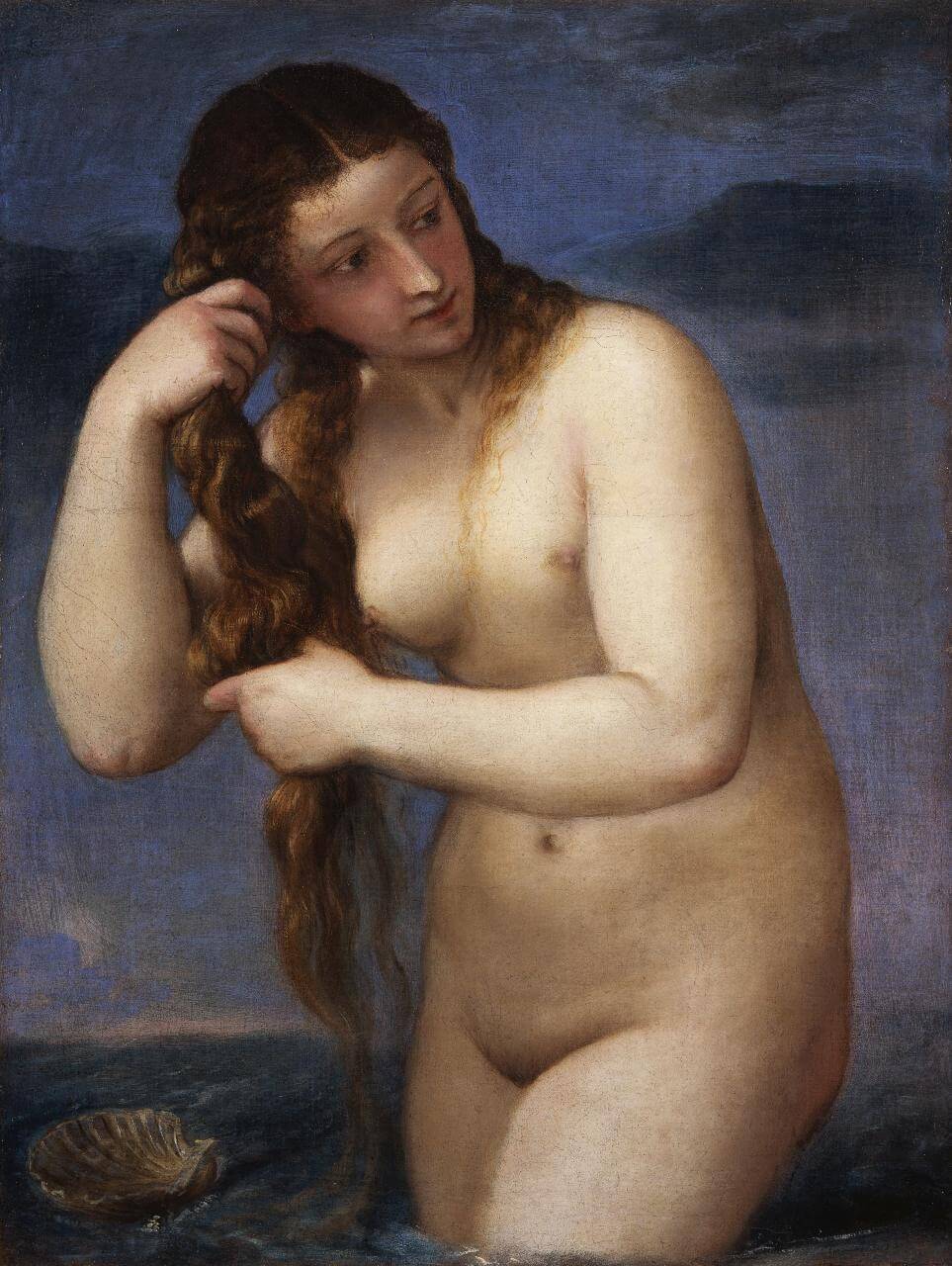
Venus, by Titian (1520)
VENUS as the planet is making a pretty tricky voyage over the night sky comparing to “much more stable” distant stars. She appears in the sky in the West, moments after the sunset and not for long, for a few days. Then she is not visible at all for another few days, but comes back after a while and from the opposite side — in the East, at the dawn, and people call her the Morning Star in this period. The “hop” happens every 584 days because Venus “overtakes” Earth when both are orbiting the Sun, like if in a hippodrome, and that is why she comes up from the other side.
Santa Anna the Grandma of Jesus
✴ Remember whose birth was marked by the Morning Star? Of course we celebrate his birthday every year, Joshua of Nazareth aka JESUS, was born in about 0 AD in the Middle East. His maternal grandmother was SANTA ANA. The same name. The same planet. Purity and Creation. Boom!
✴ There is also the military hypostasis of the Goddess of Love in the Christian pantheon, for example, when she’s incarnated to be a furious warrior yet keeping purity and faith at her best — the Maid of Orleans, Saint Joan of Arc, the warrior. As for the perception of the Hebrew language, Joanna as a name applies the same origin as for “Ana” enforced by the Hebrew name of God, which is Jah or Yah, and it is added to the beginning of the word: Joah + Ana. The Hispanic version: Juana.
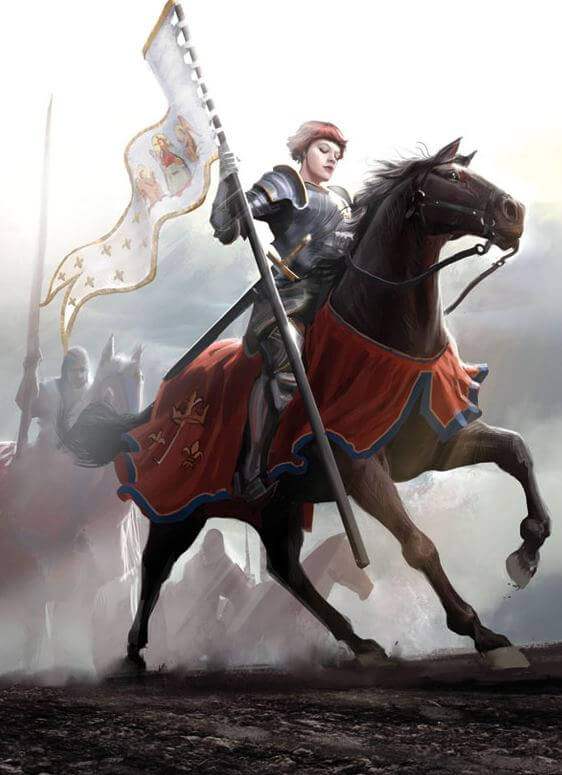
Joan of Arc by @MiguelCoimbra
✴ The Russian Imperial Order of Santa Anna is shaped clearly as the Star of Venus or Ishtar. No one could ever dispute the purity and love of Santa Anna, of course not. However, this is a military award reflecting the militaristic approach of the Goddess of War.

Russian Imperial Order of Santa Anna @imagesource
✴ Malta was once colonized by Phoenicians in the same historical period when they established Carthage, about 1000 and 800 BC. Those were skillful seafarers and free traders of their time, worshiping Tanit (Anahita) very much in the new lands. Tanit inherited Love, War, Purity and Water, all other features of Anahita, and she was obviously the patron of seafarers just as Aphrodite was. In the modern Maltese language, the Milky Way, our Galaxy, is called “The Way of Santa Anna”.
“Omnia Vincit Amor” and Marijuana
The proverbial verse “omnia vincit amor” (“love wins everything”) got created by Virgil in the 1st century BC, met in his poem “Aeneas”. I loved it even before, and now it grows on me, while this story about goddesses of love and war add even more sense. The whole world is the result of Love as the conquering power invading hearts and filling them with spiritual Purity. Love creates Life.
✴ JUANA is the Spanish version of the name “Joanna” mentioned here in the context of Joan of Arc, clearly a combination of “Jah” and “Ana”, where the latter represents Anahita, our Ancient Goddess of Love, and the former is the name of God as in Hebrew, and in the Rastafari religion.
✴ MARIA is for purity, of course, but originating from the Persian version of the name “Merriam”, which in its turn means REBELLIOUS AS THE SEA. Find latin roots in Maria and Merriam, respectively “mar” as in “maritime” and “mer” as in “mermaid”. Suggested that the spiritual purity, love, rebellious nature of the sea and its power — constitute FREEDOM.
Do you see the Star of Venus in Marijuana Leaf now?

Star of Venus (ISHTAR) in Marijuana Leaf
✴ Maria and Juana are together make MARIJUANA word. The ultimate freedom as ample as the ocean, the sacred purity of love and the whole kingdom of God — are in every bud that we toke. Yay!
Maria (freedom) + Jah (god) + Ana (love). This is Marijuana.
✴
Mon, 28/Mar/22
